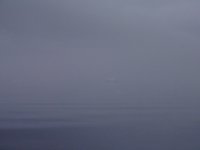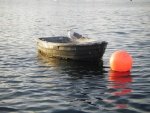Hunkydory
Active member
- Joined
- Mar 28, 2005
- Messages
- 2,745
- Reaction score
- 15
- C Dory Year
- 2000
- C Dory Model
- 22 Cruiser
- Hull Identification Number
- DOR22916I000
- Vessel Name
- Hunkydory
Only videos of about a max minute in length can be posted to our albums, so I broke down the video of how to avoid objects dead ahead, while using a auto pilot into three short I minute videos starting here.
http://www.c-brats.com/modules.php?set_ ... _photo.php
I stated in the videos, the best way of several choices to make a quick turn, while on autopilot is to use the remote steering controller. The remote does steer the boat well, but the quickest way to avoid an object with the Raymarine EV 150 is to just quickly turn the helm by hand, which though shouldn’t be used often, in a an emergency it will override the autopilot allowing for a quick turn. As the video shows in a non emergency both the remote controller & controller knob works well for steering, while the autopilot is engaged.
For those interested, I also added to my 2018 SE Alaska album 4 short, one minute videos showing our entrance into Holkham bay & Endicott Arm on our way to Fords Terror starting here.
http://www.c-brats.com/modules.php?set_ ... _photo.php
Jay
http://www.c-brats.com/modules.php?set_ ... _photo.php
I stated in the videos, the best way of several choices to make a quick turn, while on autopilot is to use the remote steering controller. The remote does steer the boat well, but the quickest way to avoid an object with the Raymarine EV 150 is to just quickly turn the helm by hand, which though shouldn’t be used often, in a an emergency it will override the autopilot allowing for a quick turn. As the video shows in a non emergency both the remote controller & controller knob works well for steering, while the autopilot is engaged.
For those interested, I also added to my 2018 SE Alaska album 4 short, one minute videos showing our entrance into Holkham bay & Endicott Arm on our way to Fords Terror starting here.
http://www.c-brats.com/modules.php?set_ ... _photo.php
Jay


